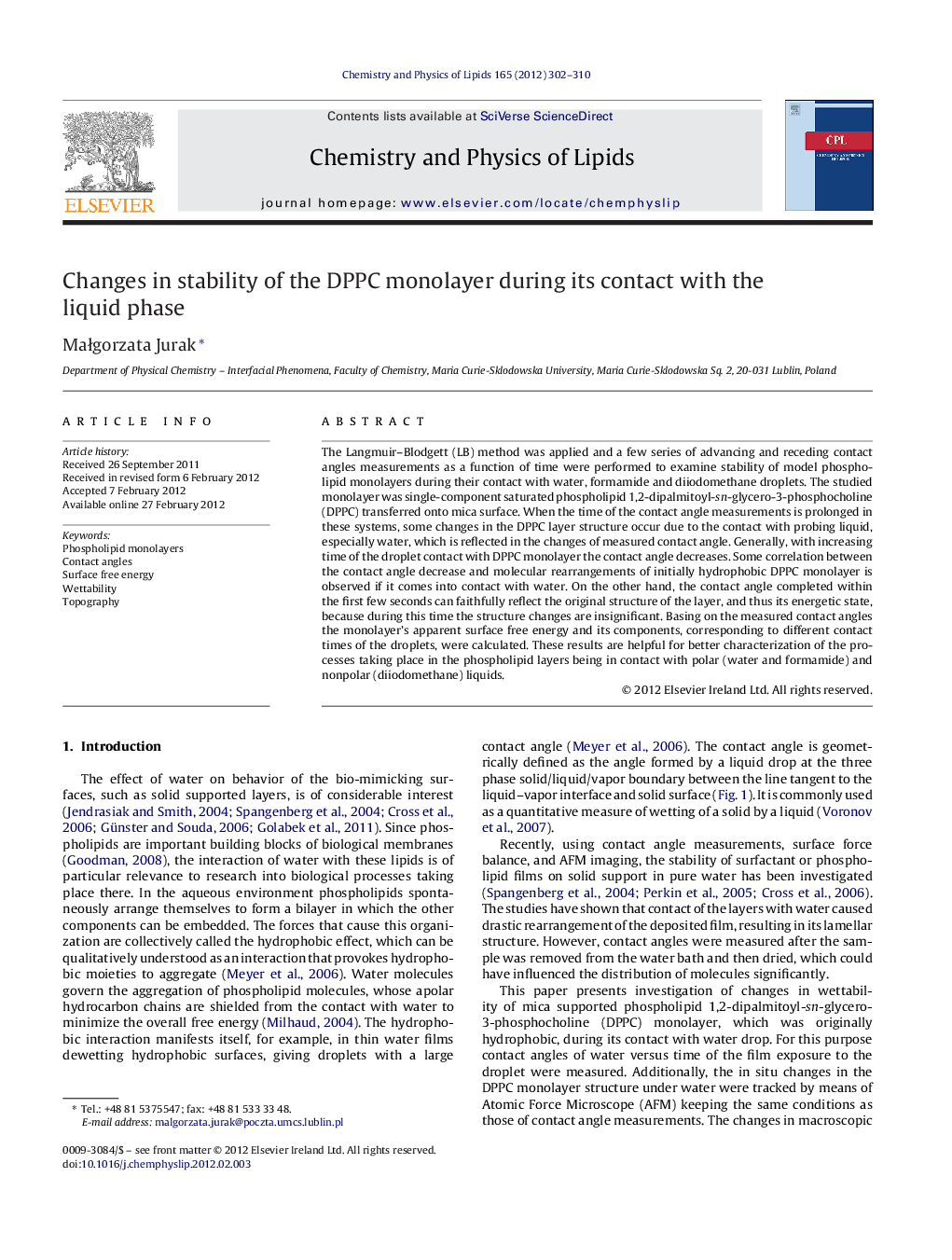| Article ID | Journal | Published Year | Pages | File Type |
|---|---|---|---|---|
| 1251952 | Chemistry and Physics of Lipids | 2012 | 9 Pages |
The Langmuir–Blodgett (LB) method was applied and a few series of advancing and receding contact angles measurements as a function of time were performed to examine stability of model phospholipid monolayers during their contact with water, formamide and diiodomethane droplets. The studied monolayer was single-component saturated phospholipid 1,2-dipalmitoyl-sn-glycero-3-phosphocholine (DPPC) transferred onto mica surface. When the time of the contact angle measurements is prolonged in these systems, some changes in the DPPC layer structure occur due to the contact with probing liquid, especially water, which is reflected in the changes of measured contact angle. Generally, with increasing time of the droplet contact with DPPC monolayer the contact angle decreases. Some correlation between the contact angle decrease and molecular rearrangements of initially hydrophobic DPPC monolayer is observed if it comes into contact with water. On the other hand, the contact angle completed within the first few seconds can faithfully reflect the original structure of the layer, and thus its energetic state, because during this time the structure changes are insignificant. Basing on the measured contact angles the monolayer's apparent surface free energy and its components, corresponding to different contact times of the droplets, were calculated. These results are helpful for better characterization of the processes taking place in the phospholipid layers being in contact with polar (water and formamide) and nonpolar (diiodomethane) liquids.
► Contact angles depend on probe liquids and the time of film exposure to the liquids. ► Macroscopic contact angles of liquids reflect changes in the monolayer structure. ► The hydrophilization of the monolayer surface during its contact with water. ► Contact angle hysteresis caused by the liquid penetration into the film interior. ► The increase in surface free energy indicates an increase in polar interactions.
